Abstract
Proteolytic sporeforming bacteria capable of surviving processing heat treatments in synthetic or fabricated protein foods exhibited no antagonistic effects on growth of Clostridium perfringens, but instead shortened the lag of subsequent growth of C. perfringens in sodium caseinate and isolated soy protein. Bacillus subtilis A cells were cultured in 3% sodium caseinate or isolated soy protein solutions. The subsequent effect on the lag time and growth of C. perfringens type A (strain S40) at 45 C was measured by colony count or absorbance at 650 nm, or both. B. subtilis incubation for 12 h or more in sodium caseinate reduced the C. perfringens lag by 3 h. Incubation of 8 h or more in isolated soy protein reduced the lag time by 1.5 h. Molecular sieving of the B. subtilis-treated sodium caseinate revealed that all molecular sizes yielded a similar reduced lag time. Diethylaminoethyl-Sephadex ion exchange fractionation and subsequent amino acid analysis indicated that the lag time reduction caused by B. subtilis incubation was not related to charge of the peptides nor to their amino acid composition. Apparently the shortened C. perfringens lag in these B. subtilis-hydrolyzed food proteins was a result of the protein being more readily available for utilization by C. perfringens.
Full text
PDF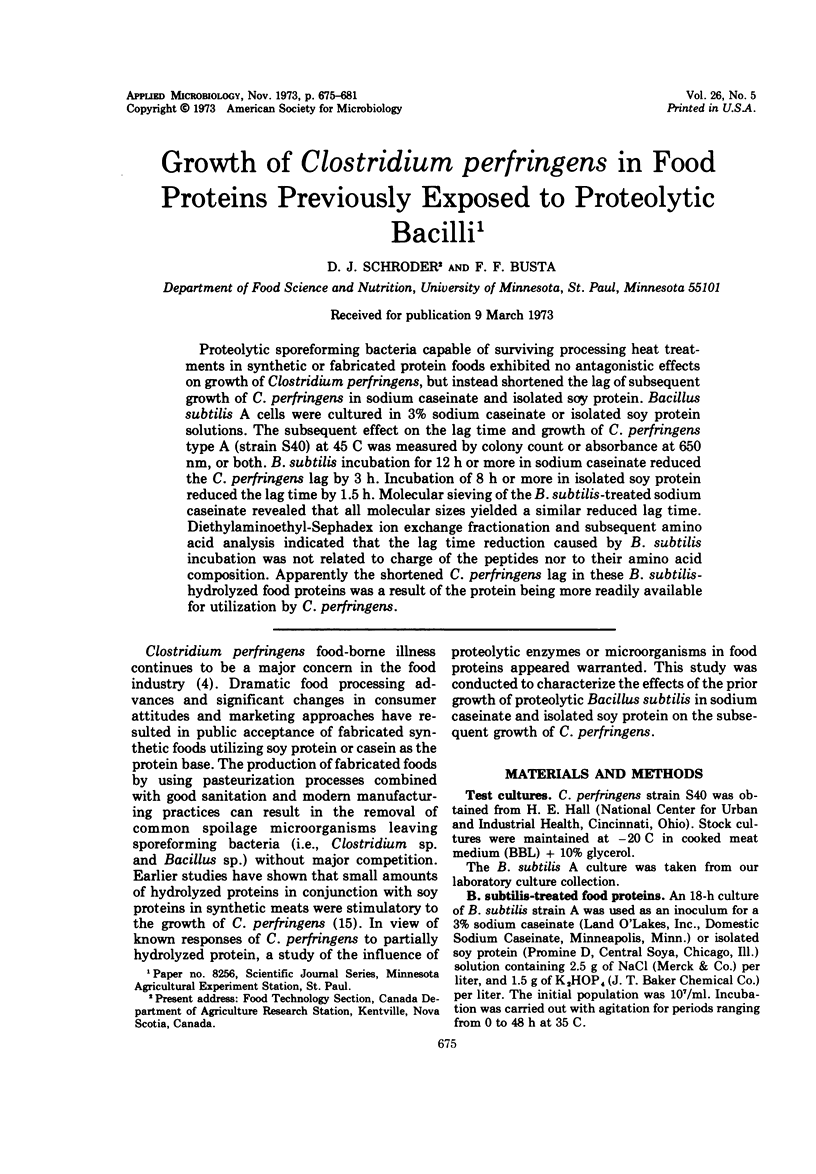
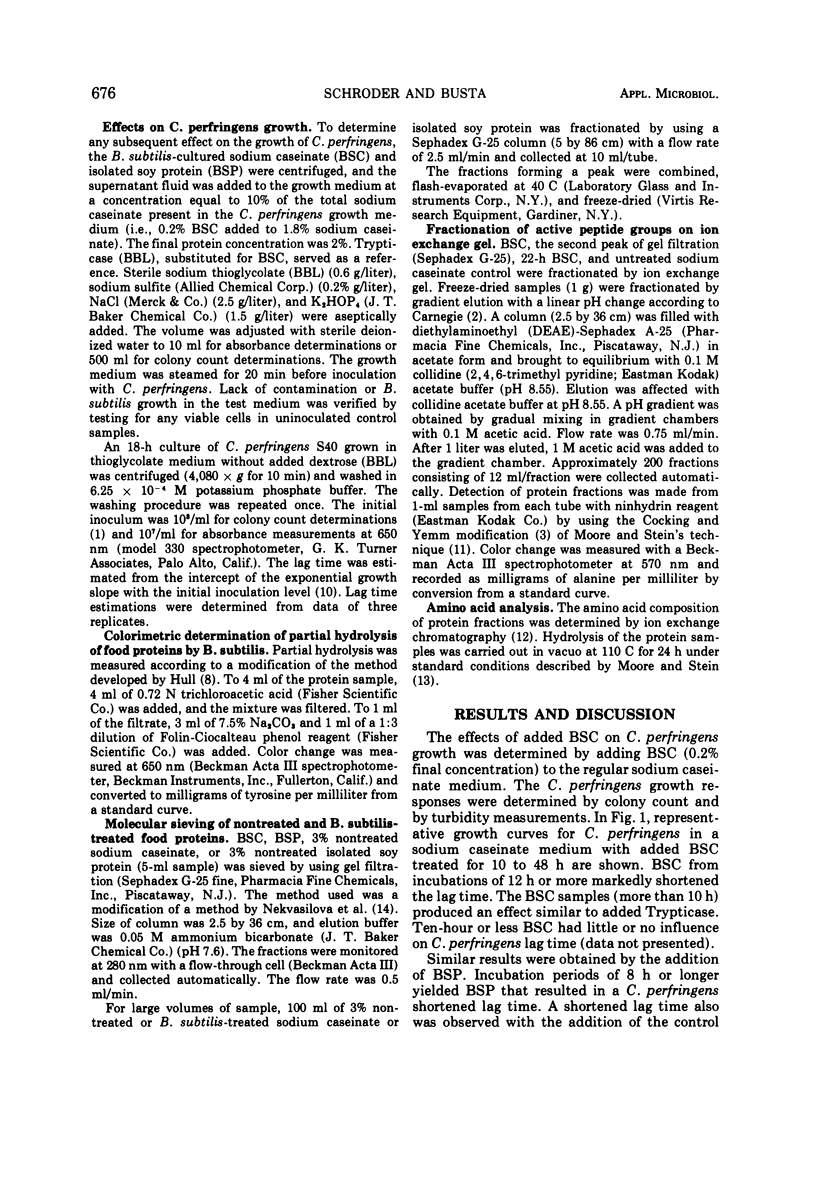
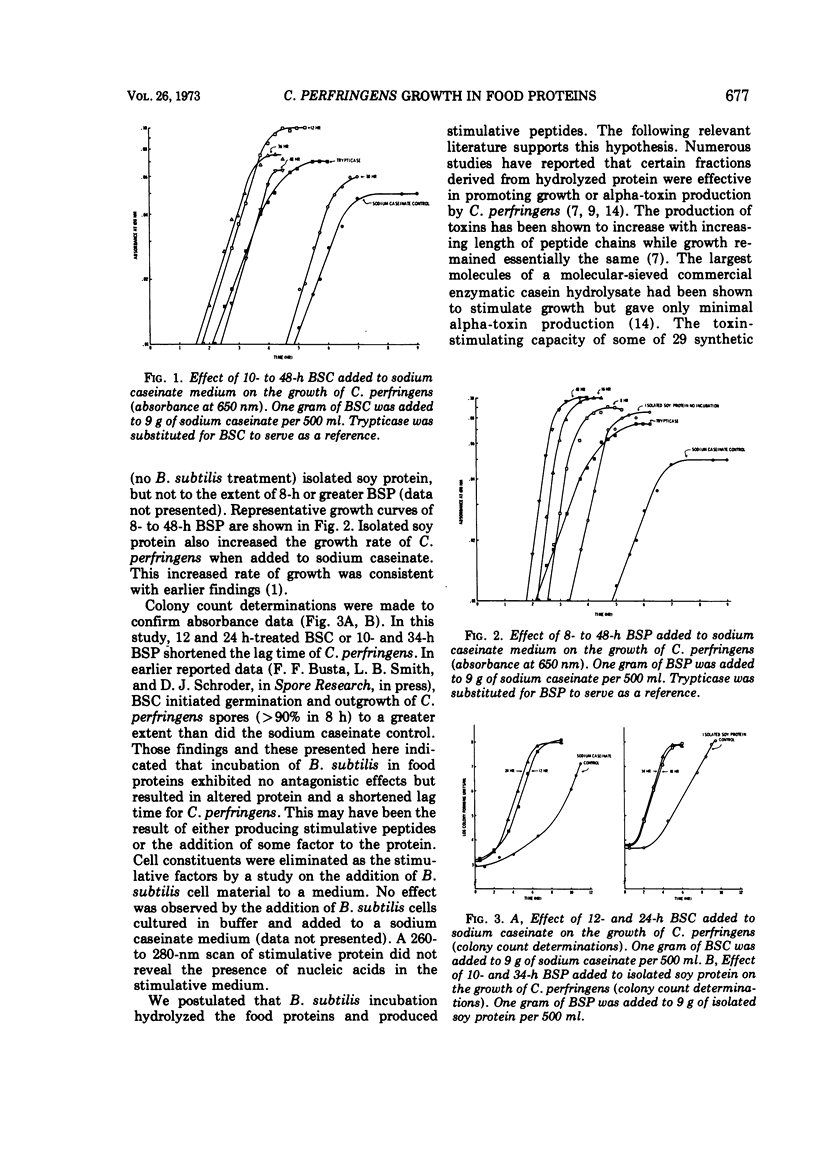
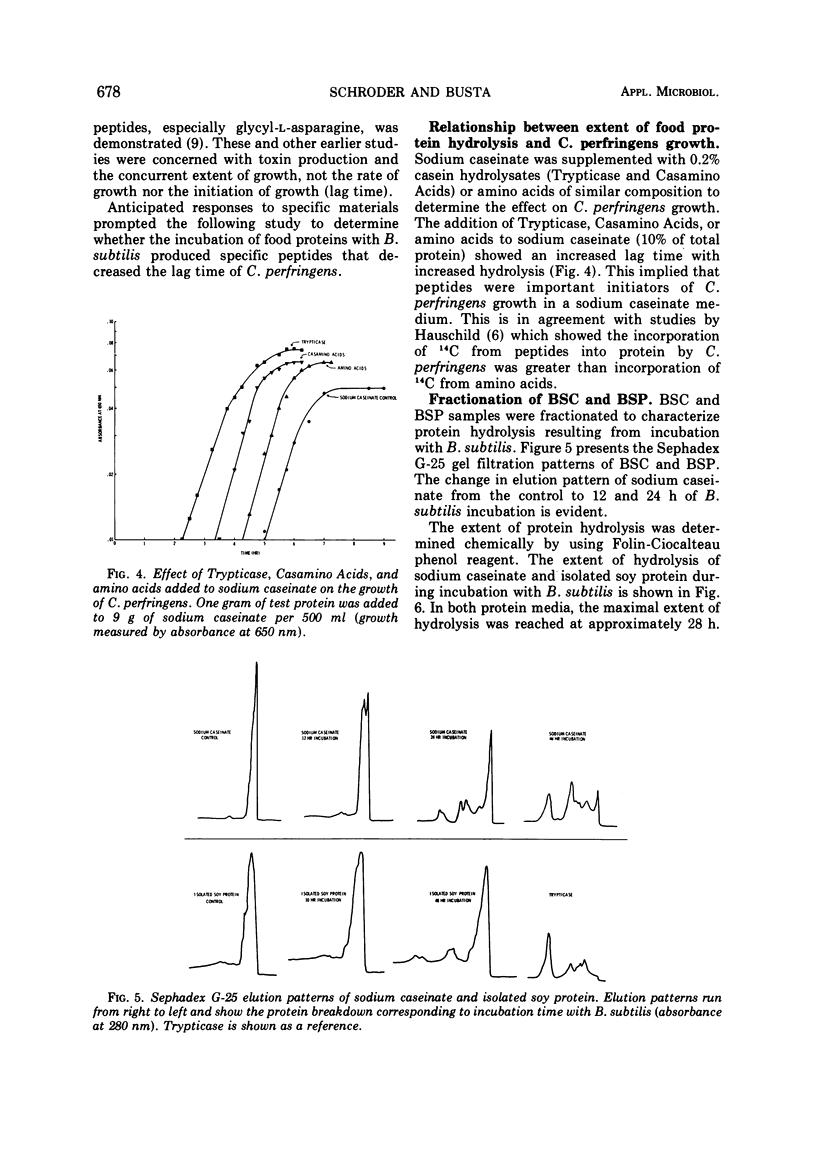
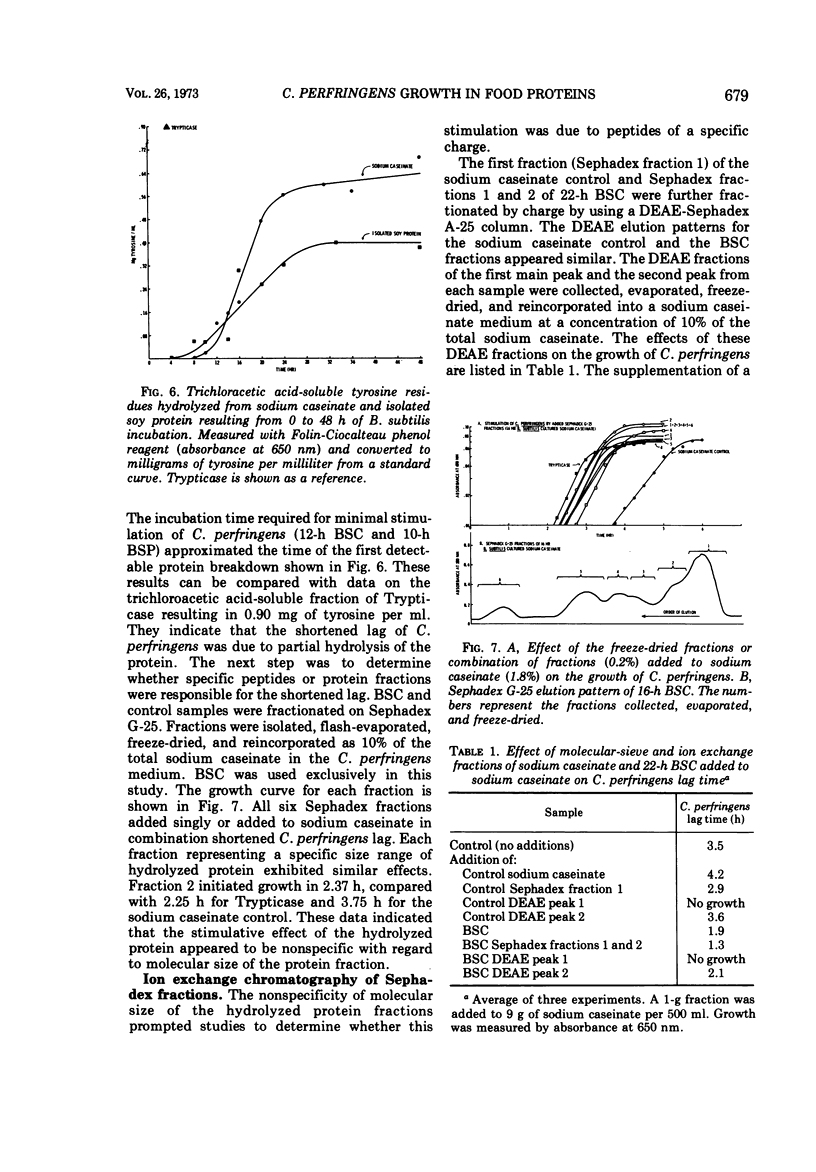
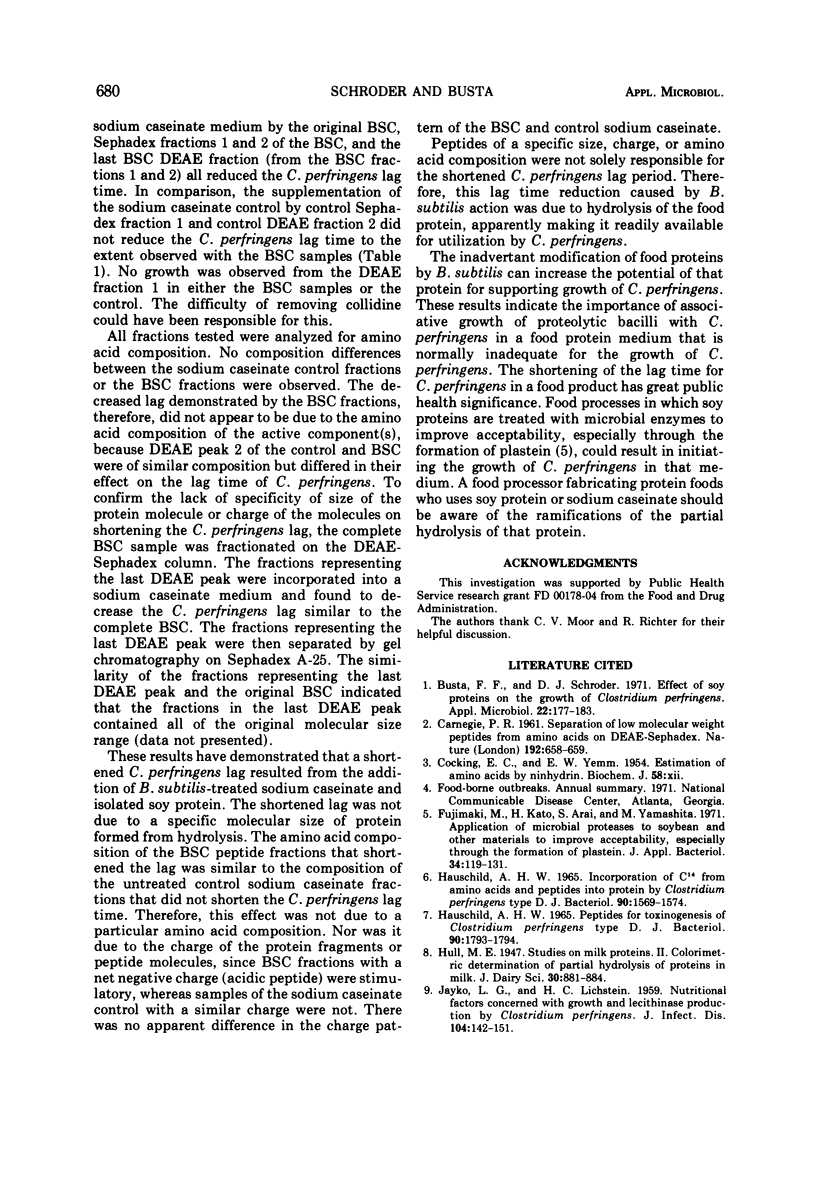
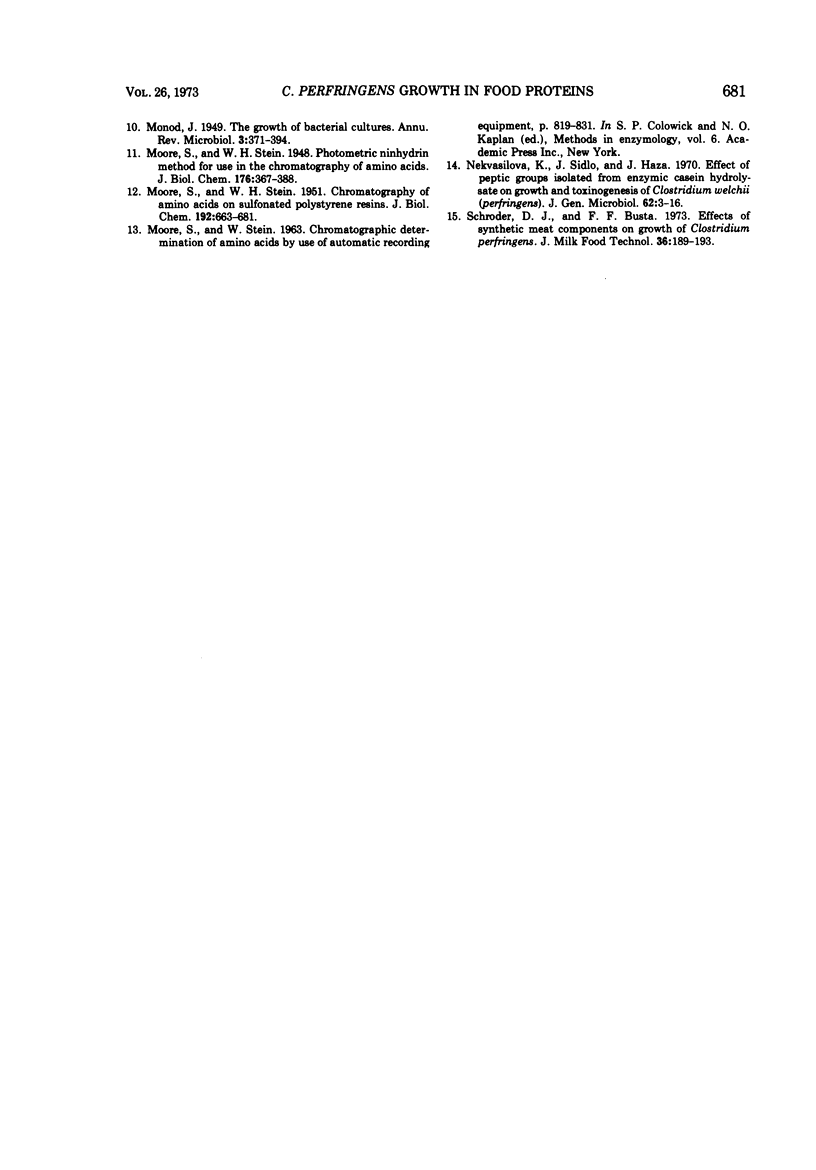
Selected References
These references are in PubMed. This may not be the complete list of references from this article.
- Busta F. F., Schroder D. J. Effect of soy proteins on the growth of Clostridium perfringens. Appl Microbiol. 1971 Aug;22(2):177–183. doi: 10.1128/am.22.2.177-183.1971. [DOI] [PMC free article] [PubMed] [Google Scholar]
- CARNEGIE P. R. Separation of low molecular weight peptides from amino-acids on 'DEAE-Sephadex'. Nature. 1961 Nov 18;192:658–659. doi: 10.1038/192658a0. [DOI] [PubMed] [Google Scholar]
- COCKING E. C., YEMM E. W. Estimation of amino acids by ninhydrin. Biochem J. 1954 Jun 19;58(330TH):xii–xii. [PubMed] [Google Scholar]
- Fujimaki M., Kato H., Arai S., Yamashita M. Symposium on microbial changes in foods. Application of microbial proteases to soybean and other materials to improve acceptability, especially through the formation of plastein. J Appl Bacteriol. 1971 Mar;34(1):119–131. doi: 10.1111/j.1365-2672.1971.tb02272.x. [DOI] [PubMed] [Google Scholar]
- Hauschild A. H. Incorporation of C14 from amino acids and peptides into protein by Clostridium perfringens type D. J Bacteriol. 1965 Dec;90(6):1569–1574. doi: 10.1128/jb.90.6.1569-1574.1965. [DOI] [PMC free article] [PubMed] [Google Scholar]
- Hauschild A. H. Peptides for toxinogenesis of Clostridium perfringens type D. J Bacteriol. 1965 Dec;90(6):1793–1794. doi: 10.1128/jb.90.6.1793-1794.1965. [DOI] [PMC free article] [PubMed] [Google Scholar]
- JAYKO L. G., LICHSTEIN H. C. Nutritional factors concerned with growth and lecithinase production by Clostridium perfringens. J Infect Dis. 1959 Mar-Apr;104(2):142–151. doi: 10.1093/infdis/104.2.142. [DOI] [PubMed] [Google Scholar]
- MOORE S., STEIN W. H. Chromatography of amino acids on sulfonated polystyrene resins. J Biol Chem. 1951 Oct;192(2):663–681. [PubMed] [Google Scholar]
- Nekvasilová K., Sídlo J., Háza J. Effect of peptidic groups isolated from enzymic casein hydrolysate on growth and toxinogenesis of Clostridium welchii (perfringens). J Gen Microbiol. 1970 Jul;62(1):3–16. doi: 10.1099/00221287-62-1-3. [DOI] [PubMed] [Google Scholar]


